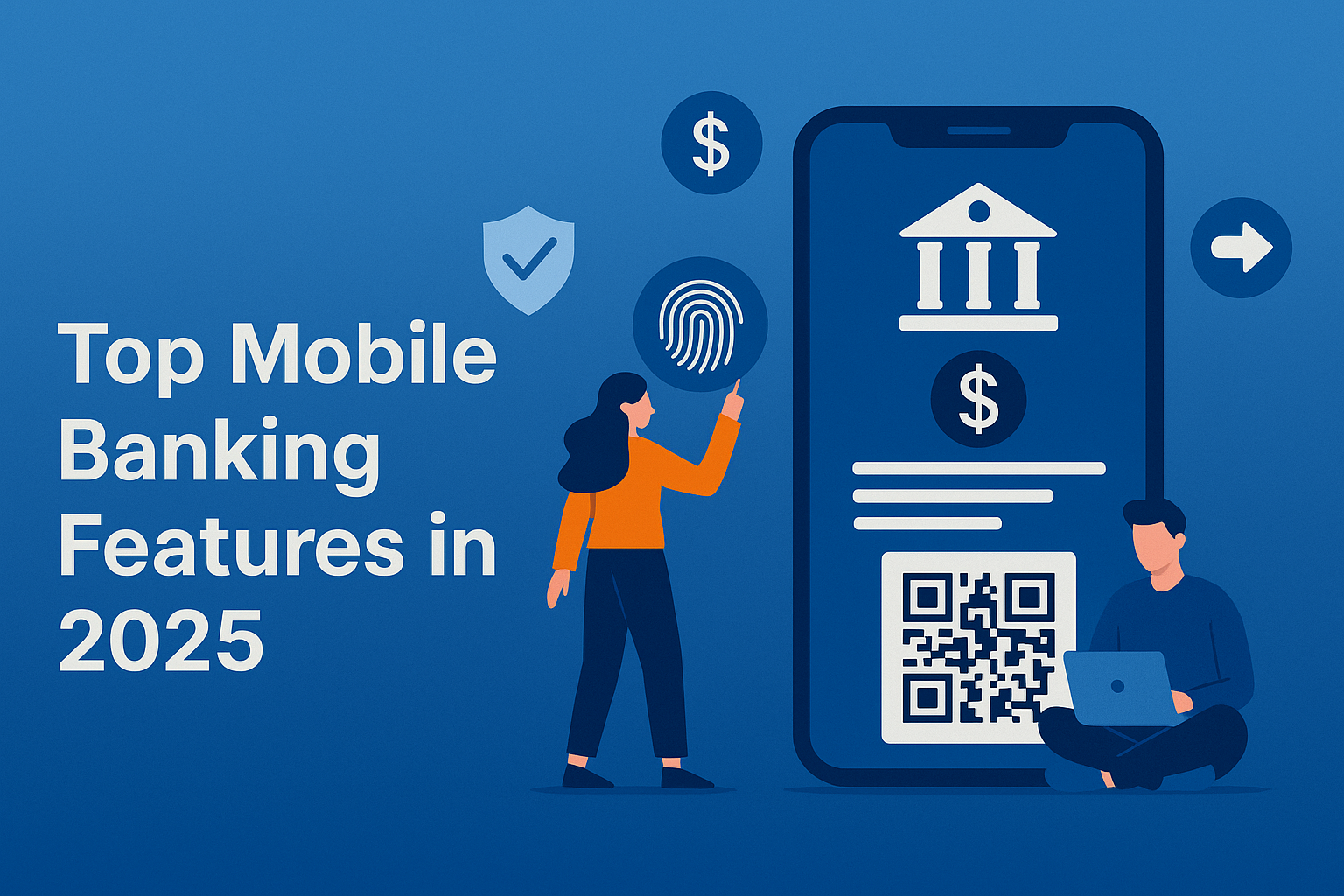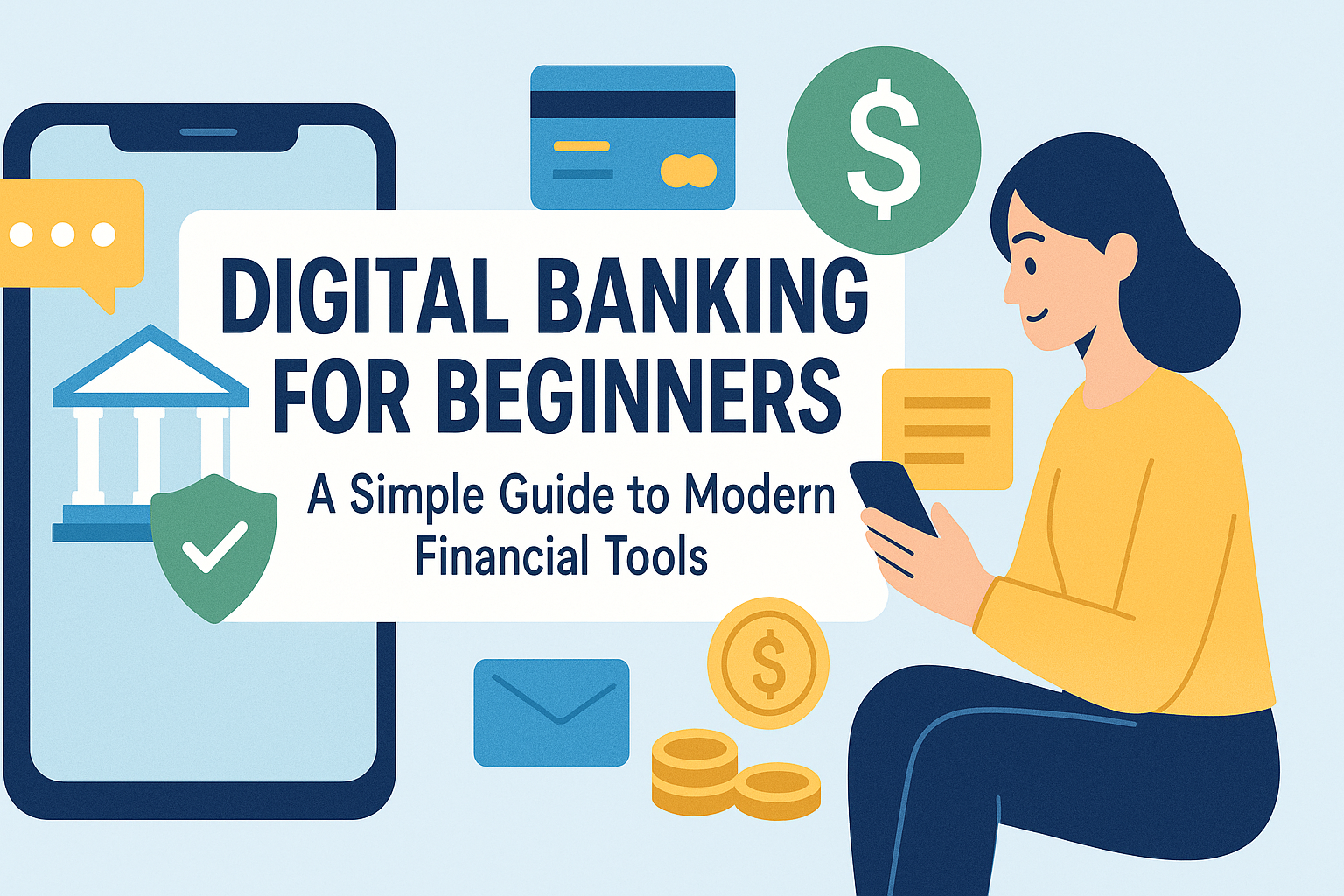The mobile banking landscape is evolving rapidly, with innovative features such as real-time payments in mobile banking apps, peer-to-peer payments and biometric authentication shaping the way we manage money. Digital financial services are not just convenient but are becoming integral to our everyday lives. As we look ahead to 2025, certain trends are set to redefine the mobile banking landscape. For a deeper dive into these emerging trends, explore our article on Top Neobank Features to Watch in 2025.
Enhanced security measures are at the forefront, ensuring users’ funds are protected as technology advances. Multifarious authentication methods and biometric verification are replacing traditional passwords, providing an extra layer of safety. In parallel, features like real-time payments and seamless peer-to-peer transactions are making financial interactions faster and more efficient than ever.
As AI-driven customer service and advanced personal finance management tools become mainstream, managing your finances will be smarter and more personalized. With cryptocurrency integration, QR code payments, cardless ATM access, and more intuitive user experience designs, mobile banking is poised for a transformative leap. This article delves into the top ten mobile banking features that will shape 2025.
Enhanced Security Measures: Protecting Your Finances
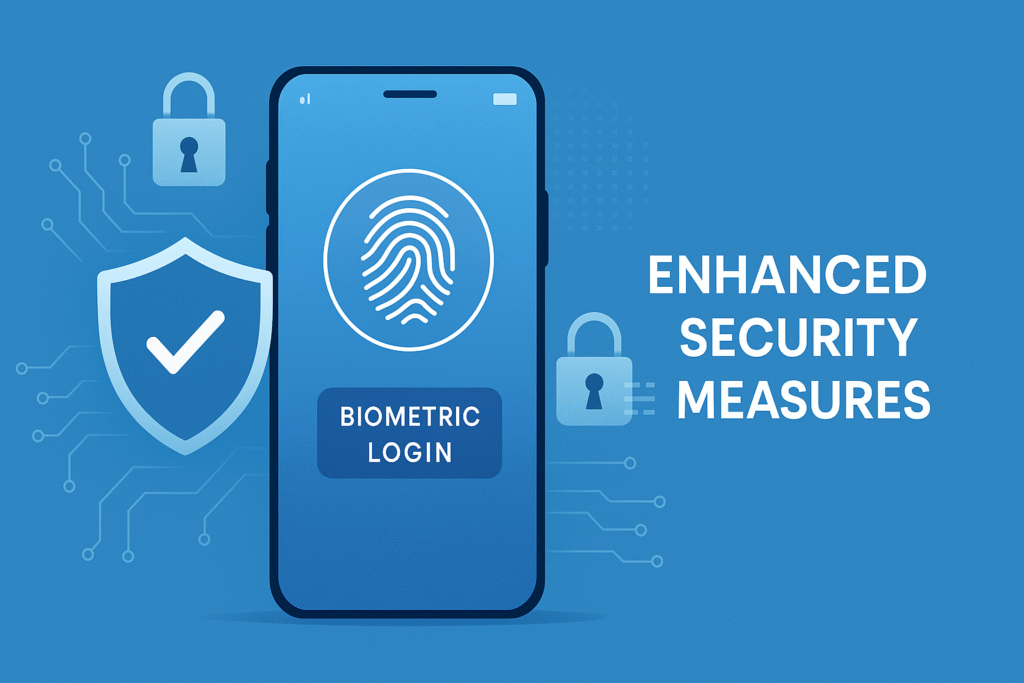
In the age of digital banking, security is paramount. Modern mobile banking apps employ cutting-edge security features to protect users’ financial data. For instance, ANZ Bank in Australia has introduced a passwordless web banking service via ANZ Plus, allowing users to log in using biometric methods like fingerprint or facial recognition, enhancing cybersecurity and simplifying user access. ANZ Essential components like biometric authentication, encryption, and real-time fraud monitoring work in tandem to safeguard against unauthorized access and cyber threats. Adhering to industry regulations such as PCI-DSS and GDPR is vital for maintaining a secure framework within these applications.
Multifactor Authentication: Beyond Passwords
Multifactor authentication (MFA) adds a robust security layer to mobile banking apps by requiring more than just a password. Typically, it involves a combination of a password and a one-time passcode or push notification for added security. Many apps now incorporate biometric authentication options, such as fingerprint scanning and facial recognition, to provide a seamless yet secure user experience. As cyber threats become more sophisticated, the banking industry continues to enhance MFA technology to protect users effectively.
Biometric Verification: The Future of Security
Biometric verification is revolutionizing security in mobile banking applications. Technologies, like fingerprint scanning and facial recognition, offer an additional security layer that is both quick and user-friendly. By 2025, biometric authentication is expected to be a standard feature in banking apps, ensuring stronger security and improved user experiences. Banks are increasingly pairing biometric measures with other security protocols like two-factor authentication to stay ahead of security challenges. As the adoption of biometric technology grows, it represents a significant step forward in combining user convenience with top-tier security.
Real-Time Payments in Mobile Banking Apps: Instant Transactions at Your Fingertips
Real-time payments in mobile banking apps empower users to conduct financial transactions outside traditional banking hours, like late at night or during dinner. These transactions are facilitated by secure algorithms that provide round-the-clock accessibility and security, crucial aspects that consumers prioritize in mobile banking features.
Apps with real-time payment capabilities in mobile banking apps utilize machine learning capabilities utilize machine learning algorithms to monitor transactions, ensuring instant alerts for anomalies or potential fraud. These real-time notifications keep users informed about transaction statuses and financial obligations, offering an added layer of security and peace of mind.
Moreover, integration with digital wallets allows for seamless electronic payments, enhancing user experience through greater convenience. To understand why digital wallets are becoming essential, read our piece on Why Digital Wallets Are the Future of Everyday Transactions.
Seamless Peer-to-Peer Transactions: Effortless Money Transfers
Peer-to-peer (P2P) payments redefine convenience in mobile banking apps by enabling seamless money transfers. Users can effortlessly transfer funds using methods such as mobile numbers, email addresses, usernames, QR codes, and bank account numbers. This integration ensures that sending money to friends and family becomes efficient and instantaneous.
P2P solutions like Polish BLIK and Swedish Swish have significantly advanced mobile money transfers, reflecting the growing demand for speed and ease .In Sweden, the Swish mobile payment system has become a dominant method for instant mobile payments linked directly to bank accounts, reflecting the growing demand for speed and ease in financial transactions.
Here is a summary of common P2P features:
| Feature | Benefit |
|---|---|
| Mobile Numbers | Quick and easy input |
| Email Addresses | Convenient for known contacts |
| Usernames | Secure and straightforward transfers |
| QR Codes | Instantly scan and transfer funds |
| Bank Account Numbers | Direct, traditional transfer method |
P2P transactions simplify user financial decisions by providing real-time notifications, which empower users with peace of mind. By minimizing complexities in money transfers, P2P features in mobile banking enhance customer experience and offer a new layer of security.
AI-Driven Customer Service: Personalized Support Anytime
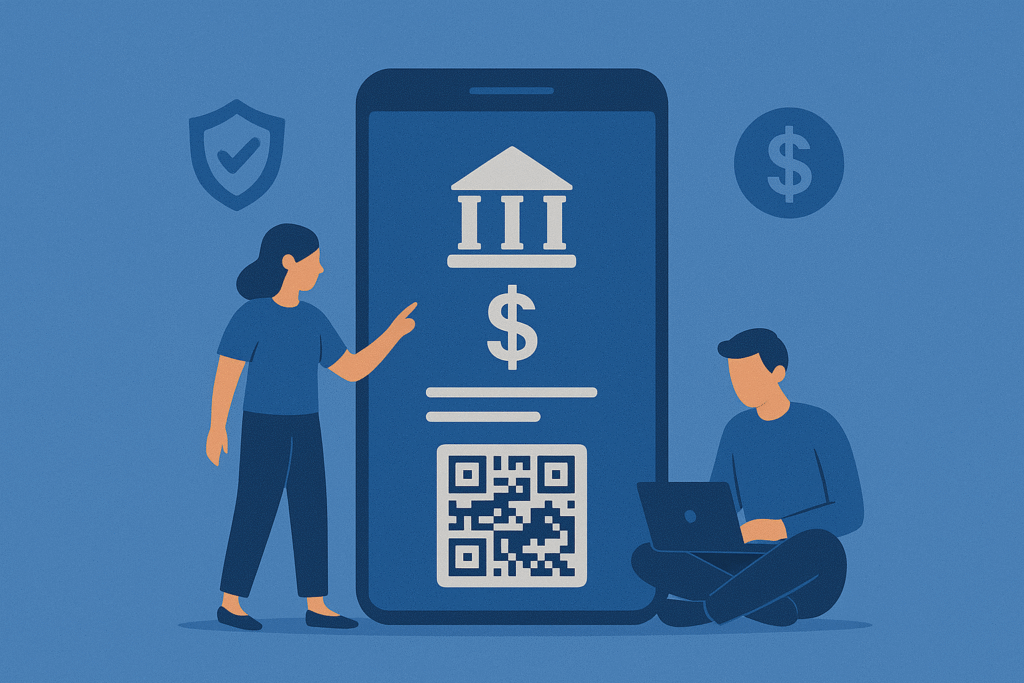
AI-powered chatbots are revolutionizing customer support in mobile banking apps by providing 24/7 assistance, effectively reducing wait times and enhancing user satisfaction. These virtual assistants handle common inquiries instantaneously, offering efficient and polite responses without additional costs to banks.
The integration of AI chatbots in banking apps goes beyond basic interactions. They offer personalized services by managing accounts and tracking expenses, thereby assisting users in making informed financial decisions. Moreover, their ability to detect potential fraudulent activities ensures an added layer of security for customers, fostering peace of mind.
AI chatbots also support advanced functionalities like voice and video banking, refining the overall User Experience. This real-time engagement improves customer experience and helps banks serve a high volume of users concurrently.
Key Features of AI Chatbots in Banking Apps:
- 24/7 Customer Support: Reduced wait times with real-time assistance.
- Personalization: Account management and expense tracking.
- Security: Fraud detection for added peace of mind.
- Advanced Interactions: Voice and video banking support.
Incorporating these chatbots is increasingly integral to modern mobile banking features, directly impacting user satisfaction and providing personalized, round-the-clock support.
Advanced Personal Finance Management: Take Control of Your Money
In today’s fast-paced digital age, mobile banking apps are revolutionizing personal finance management. These apps provide robust tools that empower users to track expenses, set budgets, and analyze spending patterns effectively. By integrating with third-party budgeting applications, they offer a comprehensive suite for managing one’s finances right in the palm of your hand. Users increasingly rely on these apps as virtual financial assistants, gaining access to detailed insights that help improve financial decisions. For additional resources on managing your finances, check out our list of Top Financial Podcasts for Money Tips and Investment Advice.Sophisticated financial tools in mobile banking apps are essential for maintaining economic stability and personal well-being.
Budgeting Tools: Financial Planning Made Easy
Budgeting tools in mobile banking apps simplify financial planning by offering users visual aids like diagrams and charts to track spending. These tools help customers set savings goals and diversify spending limits, facilitating a structured approach to financial wellness. By analyzing transaction data, the apps provide clear insights into spending habits and financial goals, enriching the user’s financial literacy. Millennials and Gen Z, in particular, find value in these personal finance management features, benefiting from personalized advice and intelligent categorization. Mobile banking apps promote disciplined financial behavior by enabling users to set budgets and monitor progress toward their objectives.
Spending Alerts: Stay Informed of Your Expenses
Staying in the loop about your finances has never been easier, thanks to spending alerts in mobile banking apps. These alerts provide instant notifications via email, SMS, or app alerts for each transaction, helping users track and verify spending promptly. Customizable alerts allow individuals to set reminders for bill due dates, low balances, and other financial commitments, adding convenience. Fast notification systems significantly reduce the risk of unauthorized or fraudulent activities, giving users an added layer of security. With spending alerts acting as a financial radar, users receive real-time feedback without needing to log in repeatedly, ensuring they stay on top of their financial commitments and goals.
Cryptocurrency Integration: Embracing the Digital Currency Revolution
The integration of cryptocurrency features in mobile banking apps is revolutionizing modern banking. For example, Revolut has introduced instant-access savings accounts offering up to 2% Annual Equivalent Rate (AER) with interest paid daily, marking a significant enhancement in digital financial services. These apps are incorporating crypto wallets, enabling users to buy, sell, and manage cryptocurrencies alongside their traditional accounts. This provides a secure and user-friendly platform for digital currency trading, enhancing user satisfaction and engagement.
Many apps will either integrate directly or partner with third-party services to offer these functionalities, depending on domestic regulatory frameworks. By 2025, the expected widespread adoption of blockchain technology will further enhance security and user experience. This integration caters to tech-savvy crypto investors, expanding the appeal and usability of mobile banking apps in the digital currency market.
Key Features:
- In-App Cryptocurrency Trading and Exchange
- Crypto Wallet Integration
- Enhanced Security through Blockchain Technology
The demand for crypto functionalities in banking apps is driven by a growing demographic of users who seek a comprehensive financial service platform that manages both fiat and digital currencies efficiently. As mobile banking apps continue to innovate, embracing cryptocurrency features will be vital in staying competitive and meeting evolving user expectations.
QR Code Payments: Quick and Contactless Transactions
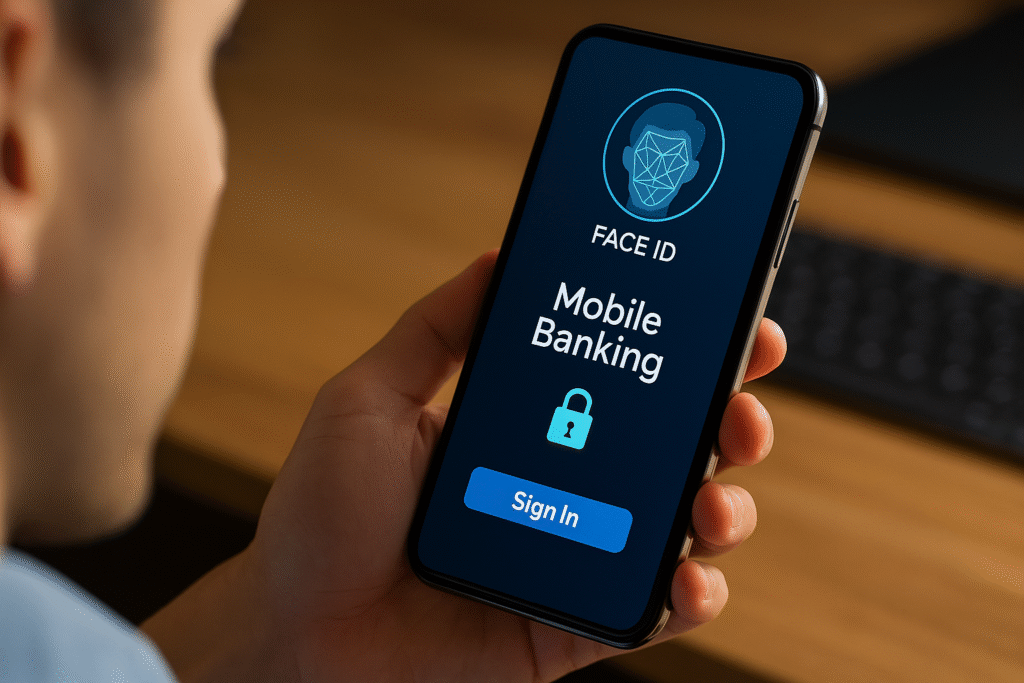
QR code payments are transforming mobile banking apps by enabling swift and contactless transactions using smartphones. In Brazil, the Pix payment system allows instant mobile payments linked directly to bank accounts, showcasing the global shift towards digital wallets and instant payments.
This method offers a secure and convenient solution, leveraging code scanning for making purchases. It is projected that global QR payments will surpass $3 trillion by 2025, highlighting their growing significance in the mobile banking landscape.
Leading banks are integrating QR code technology as an alternative payment method, allowing users to enjoy additional mobile banking app features. QR codes provide a distinct advantage over traditional barcodes by storing more data and offering data encryption capabilities, enhancing the layer of security in transactions.
By 2026, QR codes are expected to become the most widespread form of digital wallet transactions globally. With their ability to improve real-time payment experiences, QR code payments contribute significantly to user experience and customer satisfaction. This technology complements traditional payment methods, without the need for a physical card, ensuring users have multiple choices for seamless financial transactions.
Key Benefits of QR Code Payments:
- Contactless Transactions: Promotes hygiene and convenience.
- Enhanced Security: Data encryption provides increased safety.
- Versatility: Can be used across various transaction platforms.
- High Adoption Rate: Expected to dominate digital wallet transactions by 2026.
Cardless ATM Access: Convenience Without the Plastic
Cardless ATM access allows users to withdraw cash without a physical debit card, using only their mobile banking app. However, it’s worth noting that Westpac in Australia has announced the discontinuation of cardless cash withdrawals due to a decline in physical cash use, highlighting the evolving landscape of digital transactions.
This process not only enhances transaction security by generating a unique code for each withdrawal but also streamlines cash access. Users can either scan a QR code displayed on the ATM or use near-field communication (NFC) technology, ensuring seamless operation.
The benefits of cardless ATM access are plentiful. It provides convenience by allowing users to withdraw cash anytime from any location, without the worry of forgetting or losing a physical card. Furthermore, the absence of a card reduces the risk of theft or card loss, offering an added layer of security.
Key Cardless ATM Features:
- Enhanced Security: Unique withdrawal codes and reduced card-related risks.
- Convenience: Access cash without the need for a physical card.
- Technology: Utilizes QR codes or NFC for smooth transactions.
This feature epitomizes a modern mobile banking app solution, blending security with user-friendly convenience, and delivering peace of mind to customers.
Intuitive User Experience: Designing with the Customer in Mind
An intuitive user experience is crucial in mobile banking apps to ensure user engagement and satisfaction. A simple, easy-to-navigate interface with clearly labeled menus enhances usability, making it accessible to diverse populations, including users of different ages and those with disabilities. By providing personalized interactions, mobile banking apps can maintain user attention and promote loyalty. Integrating third-party services into the platform enables seamless financial operations, allowing users to manage their finances comprehensively in one place. Effective user experiences empower customers with tools for tracking and budgeting without overwhelming them.
Comprehensive Notifications: Staying Updated Instantly
Real-time notifications in mobile banking apps are essential for keeping users informed. By instantly notifying users of transactions, these alerts help verify actions and detect fraudulent activities promptly. Notifications can be customized for delivery via email, SMS, or directly through the app, providing flexibility. The convenience of receiving immediate updates on financial activities ensures users have constant oversight and security of their accounts. This capability significantly contributes to user peace of mind by keeping them informed about every transaction, reinforcing the trust in their financial institution.
Omnichannel Interactions: Seamless Banking Across Platforms
Omnichannel banking is pivotal for modern mobile banking apps, allowing users to continue banking activities across various platforms smoothly. Customers can manage accounts via mobile apps and branch visits, enhancing convenience and engagement. Through seamless integration with third-party services and open banking APIs, users can oversee their accounts across different banks from a single interface. Offline functionalities further improve customer experience by accessing essential services in areas with limited connectivity. High-level security measures like biometric authentication ensure that transactions remain secure and frictionless across all channels.
Conclusion: The Future of Mobile Banking in 2025
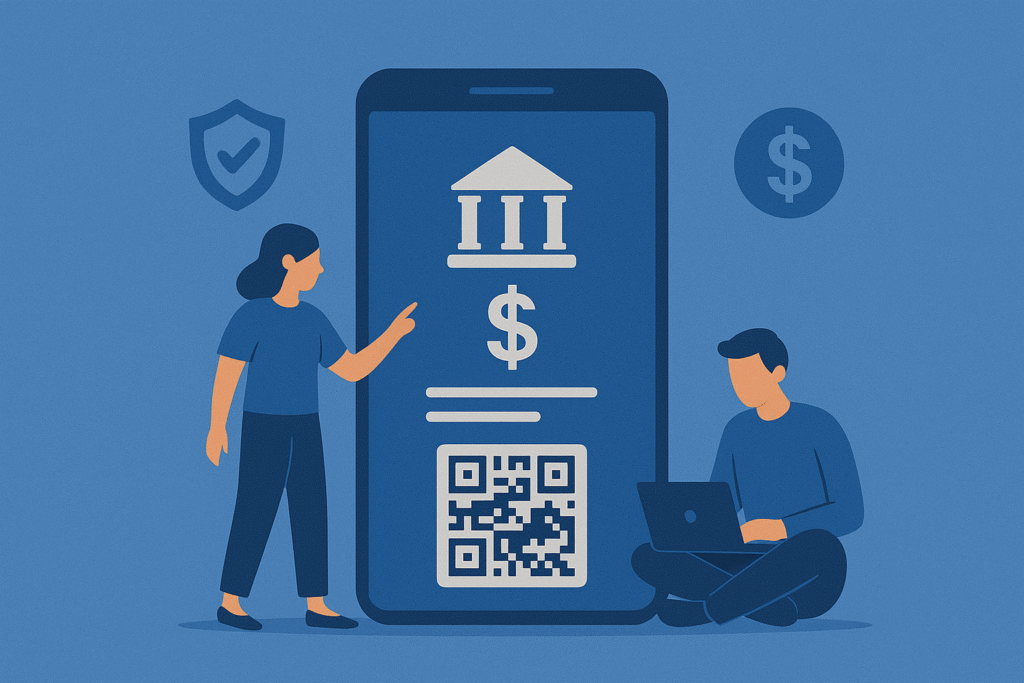
In 2025, mobile banking apps will transform with AI-powered tools, offering personalized banking experiences and automated financial management. Security will advance through biometric authentication and real-time fraud detection, ensuring user data remains safe.
The expansion of open banking ecosystems will facilitate seamless integration with third-party financial services. Technologies like blockchain and predictive analytics will further enhance security and user experience. Features like digital wallets and cryptocurrency support will become a central part of mobile banking applications.
Key Features in 2025 Mobile Banking Apps:
| Feature | Benefit |
|---|---|
| AI-powered tools | Personalized experiences and financial automation |
| Real-time fraud detection | Enhanced security |
| Open banking integration | Connectivity with third-party services |
| Blockchain and predictive analytics | Improved security and customer experience |
| Digital wallet and cryptocurrency support | Broadened payment and investment options |
| Real-time payments in mobile banking apps | Enhanced customer satisfaction |
These innovations will redefine the mobile banking landscape, providing a robust platform for users to manage their financial goals. With the inclusion of multi-factor authentication, peer payments, and virtual assistants, future banking apps will offer peace of mind while maintaining a cutting-edge user experience. If you have questions or need further information, feel free to Contact PrimeFinanceTech.

